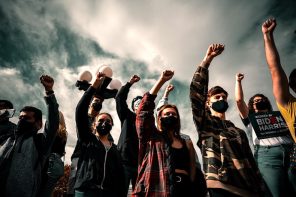Gay. Lesbian. Bisexual. Transgender. Queer. Same-sex attracted. Same-gender attracted. LDS. Mormon. Active. Less active. Unorthodox. Open. Ex. Mixed-orientation married. Same-sex married. Partnered. Single. Divorced.
Pick any two or three of these adjectives. Link them with a conjunction like “but” or “and.” As many combinations as you can imagine: that’s how many ways there are to negotiate being gay in the Mormon tradition.
And this weekend in Salt Lake City, Mormons from across the sexuality and orthodoxy spectrums will gather for what organizers are describing as a potentially historic gathering: the Circling the Wagons conference.
The historic question at the heart of this enterprise: can such a diverse group of people find common grounds for mutual acknowledgement and respect?
According to conference co-organizer Kendall Wilcox, “The challenge is how to be fully and truly inclusive on such a delicate issue.”
Some gay Mormons embrace their LGBT identity and their Mormon identity, even as they step away from activity in the institutional LDS Church.
Some choose to live orthodox Mormon lives, rejecting LGBT identity and preferring instead to describe themselves as Mormons who experience “same-sex attraction” or “same-gender attraction,” while adhering to a code of morality that forbids all sexual contact outside the bounds of heterosexual marriage.
Others claim and openly affirm a gay identity while carefully negotiating a path to maintaining church activity and membership.
All of these paths entail profound risks, costs, and consequences. All require a level of conscious deliberation on matters of sexuality and spirituality that heterosexual Mormons take for granted.
Saturday, Wilcox will convene a panel of representatives from three different organizations that serve LGBT/SGA Mormons to explore different approaches to LDS homosexuality: Affirmation, the nation’s oldest organization of gay Mormons, North Star and Family Fellowship.
The Circling the Wagons conference will feature Jimmy Creech, a former United Methodist Church minister defrocked for marrying LGBT couples, as well as LDS LGBT ally Carol Lynn Pearson. Utah State University professor Renee Galliher will present the findings of an unprecedented survey of thousands of LDS LGBT/SSA individuals, while conference co-organizer Julia Hunter will film “It Gets Better” videos by and for Mormons.
“That this conference is even happening is hard evidence that things are getting better,” says Hunter. “I hope that the energy generated here this weekend will continue to ripple outward into our community with love and understanding; that the conversation will continue—on the web, in our chapels, with our visiting teachers, between brothers and sisters. The heavy fog of silence surrounding this community—our experiences,our voices—is lifting.”
Hunter, a concert violinist, plans to share her Mormon story at a Sunday conference meeting. “I will play my version of three Mormon hymns—our hymns—one of which was written by my pioneer ancestor—for everyone. This is the music that shaped me and made me who I am. I’m Julia, I’m a lesbian with a partner, and I’m a Mormon.”
The conventional wisdom about grassroots Mormon efforts like these is that they cannot make a substantial impact on the institutional LDS Church. Within the Church, knowledge is understood to flow from LDS Church leaders down to members, and not the other way around. But observing even the last few years of activity around LGBT issues in the Church suggests that there is now a parallel dynamic in play, as Mormons step in to foster important conversations in the service of the broader Mormon community but independent of the institutional LDS Church.
Efforts like the Circling the Wagons conference suggest that a critical mass of gay and SGA Mormons seeking to maintain their Mormon identity are creating new spaces where individuals can work out delicate faith questions with the support of a Mormon faith community—wherever that process leads them.




